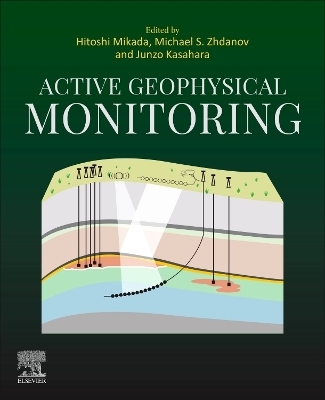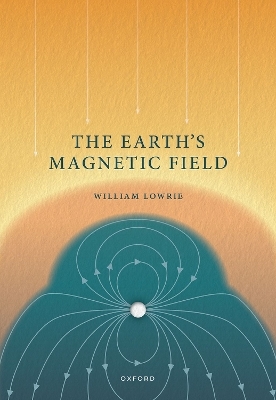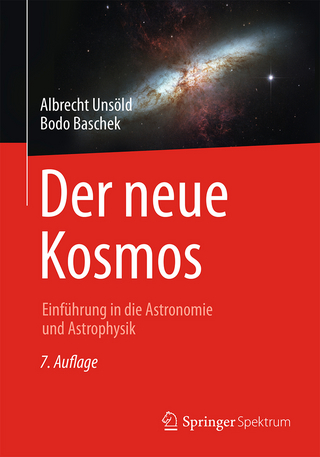
Active Geophysical Monitoring
Elsevier - Health Sciences Division (Verlag)
978-0-443-21424-0 (ISBN)
- Noch nicht erschienen (ca. Juni 2025)
- Versandkostenfrei innerhalb Deutschlands
- Auch auf Rechnung
- Verfügbarkeit in der Filiale vor Ort prüfen
- Artikel merken
Hitoshi Mikada is a Professor at Kyoto University, Japan. He received both M.S. and D.Sc. Degrees in geophysics from the University of Tokyo in 1983 and 1994, respectively. He started his professional career as an interpretation engineer in the petroleum industry. In 1991, he started his academic career as a research associate of the Volcano Research Center of the Earthquake Research Institute of the University of Tokyo, and as a senior scientist in the Deep-Sea Research Department of Japan Agency for Marine-earth Science and Technology (JAMSTEC) in 1999-2004. In 2004, he moved to Kyoto University to become in charge of the Geophysics laboratory. His main interest includes research on theories and praxis in seismic scattering, wave propagation in attenuating and anisotropic media, seismic data processing, electromagnetic exploration, geophysical logging, etc. Dr. Michael Zhdanov is a distinguished professor in the Department of Geology and Geophysics at the University of Utah in Salt Lake City, USA, and the director of the Consortium for Electromagnetic Modeling and Inversion (CEMI). He is also the founder and CEO of TechnoImaging LLC. Dr. Zhdanov is a leading expert in the field of theoretical and applied geophysics and is the author of more than 400 papers, including more than 15 monographs published in English, Russian, and Chinese, and holds more than two dozen patents. Professor Zhdanov is a full member of the Russian Academy of Natural Sciences, a fellow of the Electromagnetics Academy, USA, and a senior member of IEEE. He received one of the highest awards of the International Society of Exploration Geophysicists, an honorary membership award, in recognition of his distinguished contributions to exploration geophysics and to the advancement of the profession. Junzo Kasahara received B. S., M.S., and D.Sc. degrees in Geophysics from Nagoya University in 1965, 1967, and 1970, respectively. Between 1970 -1986 and 1988-2004, he was the assistant, associate, and full professors at the university of Tokyo. He worked in marine seismology. During 1974,1976, and in 1979, was the visiting associate professor of University of Hawaii. In 1986, he joined Schlumberger Japan as manager for seismic interpretation and the logging tool design. During his academic works, he published three books from the University of Tokyo Press. He was awarded the professor of emeritus of the University of Tokyo. In 2004, he joined Tono Geoscience Center as a senior researcher, where he worked on the ACROSS project. Between 2004 and 2008, he served for the extension of the Japan Continental Shelf. Currently, he is the principal investigator for the geothermal project and visiting professor at the University of Shizuoka.
Section 1: General Concepts and Historical Review1. General Concept of Active Geophysical Monitoring 1.1 - Large-scale geophysical surveys of the Earth’s crust using high-power electromagnetic pulses 1.2 – Development of Marine Seismic Vibrator and Experimental Results 1.3 – Seismic active monitoring system concept–Advantages of Using the Complex Envelope 2. Active monitoring targets 2.1 - Active geophysical monitoring of hydrocarbon reservoirs using electromagnetic methods 2.2 - Joint iterative migration of surface and borehole gravity gradiometry data 2.3 - Feasibility study of gravity gradiometry monitoring of CO2 sequestration in deep reservoirs using surface and borehole data 2.4 - Feasibility study of reservoir monitoring using the induced polarization effect associated with nanoparticles Section 2: Theory and Technology of Active Monitoring 3. Technology of Active Monitoring 3.1 - Nonlinear processes in Seismic Active Monitoring 3.2 - Optical principles of distributed sensing 3.3 Geophysical exploration at Ohnuma geothermal area using optical fiber system 3.4 DAS-VSP at Sumikawa geothermal field 3.5 - Passive monitoring of subsurface active fluid flow 3.6 - Development of large load capacity externally pressurized gas journal bearings for rotary-type vibration exciters with large static imbalance 3.7 - Electromagnetic—accurately controlled routinely operated signal system and corresponding tensor transfer functions in diffusion field region 4. Theory of Data Analysis and Interpretation 4.1 - Maxwell’s equations and numerical electromagnetic modeling in the context of the theory of differential forms 4.2 - 3D electromagnetic holographic imaging in active monitoring of sea-bottom geoelectrical structures 4.3 - Foundations of the method of EM field separation into upgoing and downgoing parts and its application to MCSEM data 4.4 - Geothermal resource exploration using 3D joint Gramian inversion of airborne gravity gradiometry and magnetotelluric data 5. Signal Processing in Active Monitoring and case histories 5.1 - Effect of spatial sampling on time-lapse seismic monitoring in random inhomogeneous media 5.2 - Characteristics of ACROSS signals from transmitting stations in the Tokai area and observed by Hi-net 5.3 - Stacking Strategy for Acquisition of an ACROSS Transfer Function 5.4 - Time-lapse detecting possible pre-slip preceding the future Nankai Trough mega-earthquake using the seismic reflection change at the subducting Philippine Sea Plate 5.5 - Active and passive monitoring towards geophysical understanding of interplate seismogenesis in the offshore 5.6 -ACROSS time lapse for the field study in the desert area of Saudi Arabia 5.7 - Seimic time lapse imaging of air injection using single ultra-stable ACROSS seismic source and the reverse time imaging method 5.8 – Decomposition and utilization of source and receiver ghosts in marine seismic reflection survey data Section 3: Case Histories 6. Regional Active Monitoring Experiments 6.1 - Active surface and borehole seismic monitoring of a small supercritical CO2 injection into the subsurface: experience from the CO2CRC Otway Project 6.2 - Geophysical monitoring at the Nagaoka pilot-scale CO2 injection site in Japan 6.3 - Comprehensive seismic monitoring of an onshore carbonate reservoir: a case study from a desert environment
| Erscheint lt. Verlag | 1.6.2025 |
|---|---|
| Verlagsort | Philadelphia |
| Sprache | englisch |
| Maße | 191 x 235 mm |
| Themenwelt | Naturwissenschaften ► Geowissenschaften ► Geophysik |
| ISBN-10 | 0-443-21424-7 / 0443214247 |
| ISBN-13 | 978-0-443-21424-0 / 9780443214240 |
| Zustand | Neuware |
| Informationen gemäß Produktsicherheitsverordnung (GPSR) | |
| Haben Sie eine Frage zum Produkt? |
aus dem Bereich


